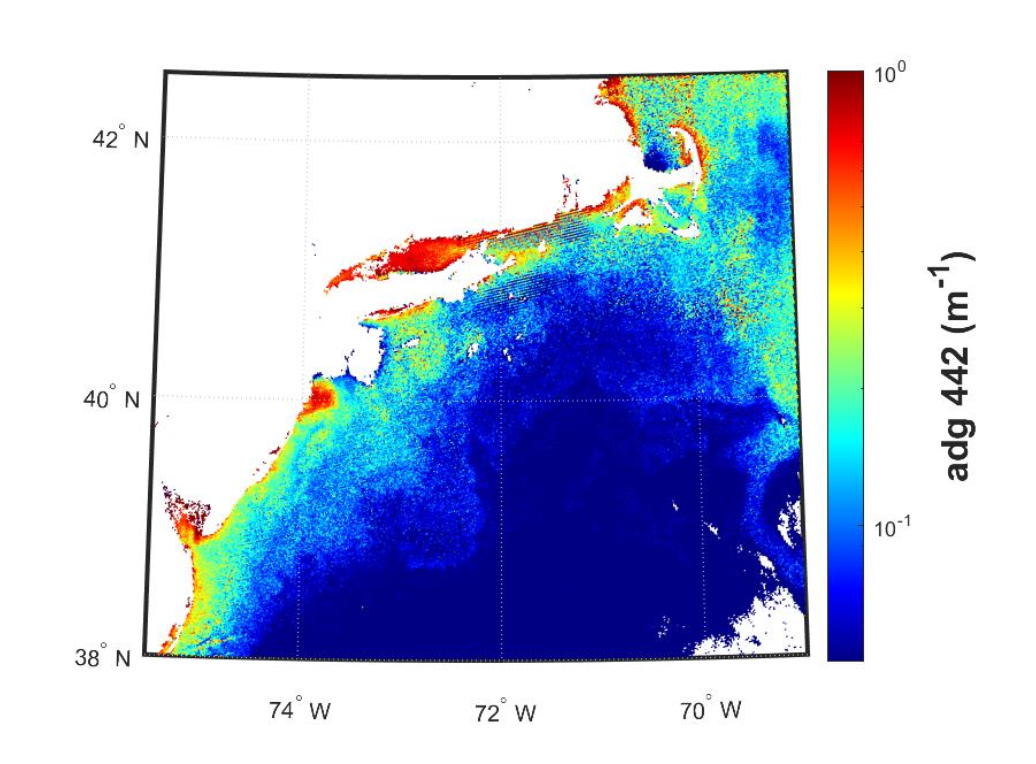10 Spectral non-algal particle plus dissolved organic matter absorption coefficients (adg)
What is it?
These absorption coefficients specifically define how light is absorbed by the combined effect of non-living particles (detrital) and dissolved optically-active materials i.e. CDOM.
How does it impact Aquaculture/Fisheries?
The increased absorption of light by detritus+CDOM can indicate the presence of a declining phytoplankton bloom, or land-based detritus+CDOM from river input. In cases of known high river discharge events (e.g. after a storm event or heavy rainfall or ice melt), this product is a useful water mass tracer. CDOM has been found to be useful in source tracking of aquaculture as well as wastewater pollution.
What are the limitations/caveats?
While the algorithm is tunable, its standard configuration defines a constant “shape” of detrital/CDOM absorption, so there is no information that can be derived about the origin of the materials other than through subjective spatial-temporal context. Note, this is a combined detrital matter + CDOM product, and not a standalone CDOM product (TBD).
Does HYPERSPECTRAL directly improve/enable this product?
It does, in that it offers a full suite of adg coefficients across the visible spectrum. PACE Science and Applications Team members are working to improve this product using new approaches to radiative transfer as well as machine learning techniques. These improved products, including the separation of ad (detritus) from ag (CDOM, or ‘gelbstoff’) are TBD.
